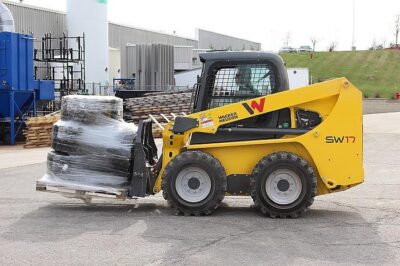In today’s dynamic construction and industrial environments, the operation of heavy machinery requires specialized knowledge and skills. Among these, Bobcat safety training stands out as essential for operators handling this versatile equipment. Bobcats, known for their compact size and multifunctionality, are often used in construction, landscaping, and agriculture. However, their operation is not without risks. Proper training ensures that operators can handle the equipment safely, preventing accidents and enhancing productivity.
Key Components of Bobcat Safety Training
Bobcat safety training encompasses several critical areas, ensuring that operators are well-versed in both the theoretical and practical aspects of machinery operation. Training typically covers:
- Machine Familiarization: Understanding the Bobcat’s features, controls, and capabilities.
- Operational Techniques: Learning safe and efficient operating procedures, including maneuvering and load handling.
- Maintenance Practices: Routine checks and maintenance procedures to ensure the machine’s longevity and safe operation.
- Emergency Procedures: Training on how to respond to emergencies, such as machine malfunctions or accidents.
Benefits of Comprehensive Bobcat Safety Training
Investing in comprehensive Bobcat safety training provides numerous benefits for both employers and employees. Proper training reduces the risk of workplace accidents, leading to fewer injuries and less downtime. Additionally, well-trained operators can perform tasks more efficiently, increasing overall productivity. For employers, this means a safer work environment and potentially lower insurance premiums due to a reduced number of claims.
The Rising Demand for Aerial Lift Training Certificate
Alongside Bobcat safety training, obtaining an aerial lift training certificate is becoming increasingly crucial in many industries. Aerial lifts, including scissor lifts and boom lifts, are commonly used for tasks that require working at heights. Given the inherent risks of working above ground level, proper training is essential to ensure safety and compliance with regulatory standards.
Curriculum of Aerial Lift Training Programs
Aerial lift training programs are designed to equip operators with the necessary skills and knowledge to safely operate these lifts. The curriculum typically includes:
- Understanding Equipment Types: Familiarization with different types of aerial lifts and their specific uses.
- Safety Protocols: Comprehensive safety procedures, including pre-operation inspections and safe operating practices.
- Fall Protection: Training on the use of fall protection equipment and techniques to prevent falls.
- Regulatory Compliance: Ensuring operators are aware of and comply with relevant safety regulations and standards.
The Impact of Aerial Lift Training on Workplace Safety
Obtaining an aerial lift training certificate significantly impacts workplace safety. Trained operators are better equipped to handle the complexities of working at heights, reducing the likelihood of accidents. This certification also demonstrates a commitment to safety, which can enhance the company’s reputation and ensure compliance with occupational safety regulations.
Integrating Bobcat Safety Training and Aerial Lift Training
For companies utilizing both Bobcats and aerial lifts, integrating training programs can streamline the process and ensure comprehensive safety coverage. This integrated approach allows for consistent safety standards across different types of equipment and can be more efficient in terms of time and resources.
Choosing the Right Training Provider
Selecting a reputable training provider is critical to the success of safety training programs. Look for providers with a proven track record, certified instructors, and comprehensive training materials. Safetyfirsttraining.ca, for example, is known for offering high-quality training programs tailored to meet industry standards.
Conclusion
Bobcat safety training and obtaining an aerial lift training certificate are essential steps in ensuring workplace safety and efficiency. Proper training reduces the risk of accidents, enhances productivity, and ensures compliance with safety regulations. Companies investing in these training programs demonstrate a commitment to the well-being of their employees and the overall safety of their operations. To learn more about how to implement these training programs effectively, visit safetyfirsttraining.ca.

